Oh, the magic of the soda bath.
I give you the same advice I practice in my own kitchen: Try never to give tin a hard abrasive scrub. Tin is a relatively soft metal and the amount of force you can apply with a scrub sponge and an abrasive cleaner (such as Comet, Bon Ami, Bar Keeper’s Friend, Soft Scrub, et cetera) is enough to abrade it away. It’s better to deglaze the pan while it’s still warm, or fill it with water and let it sit to soften food residue so it can be wiped away with a non-scratch scrub sponge.
But let’s face it, that might not enough to keep a daily-use pan clean. My skillets, in particular, pick up stubborn patches of hard baked-on food oils that won’t budge with normal cleaning. This seasoning isn’t necessarily a bad thing, but it’s a little unsightly.
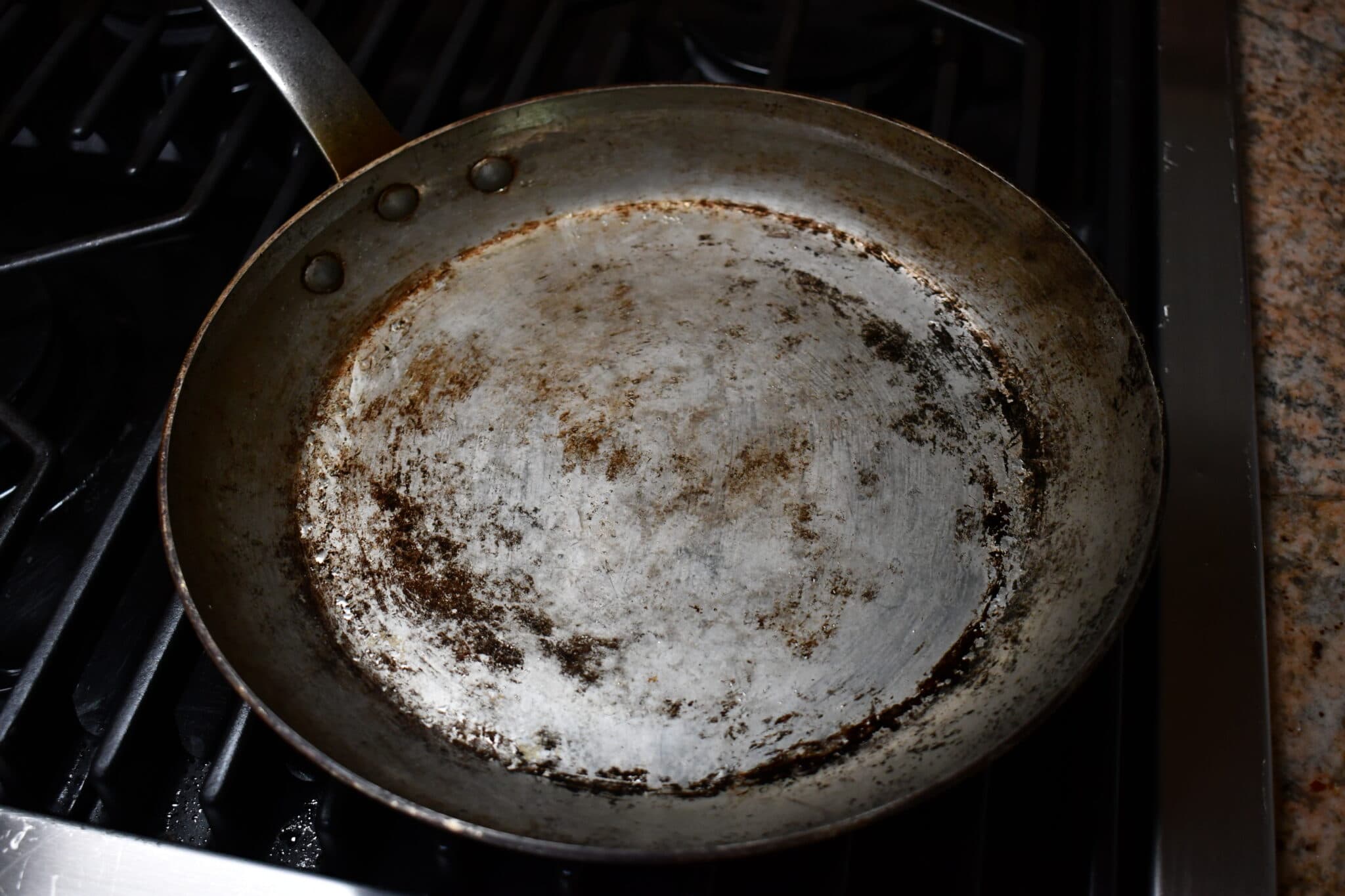
My solution? A soda bath.
Please note that I mean sodium bicarbonate — NaHCO3 — which in the US we call “baking soda.”
The procedure is pretty simple: fill the pan with water to cover the discolored areas, add a large quantity of baking soda, and heat the water to a boil. Allow the water to boil for several minutes. Then very carefully drain the water — it is quite hot, after all — and give the interior a gentle-but-thorough scrub to remove the last vestiges of oils clinging to the tin. (Use a non-scratch sponge and a paste of baking soda and water as a gentle abrasive.) The result will not be as clean as a new tinning job, of course, but it will be much improved.
Here is a before and after for the skillet above.

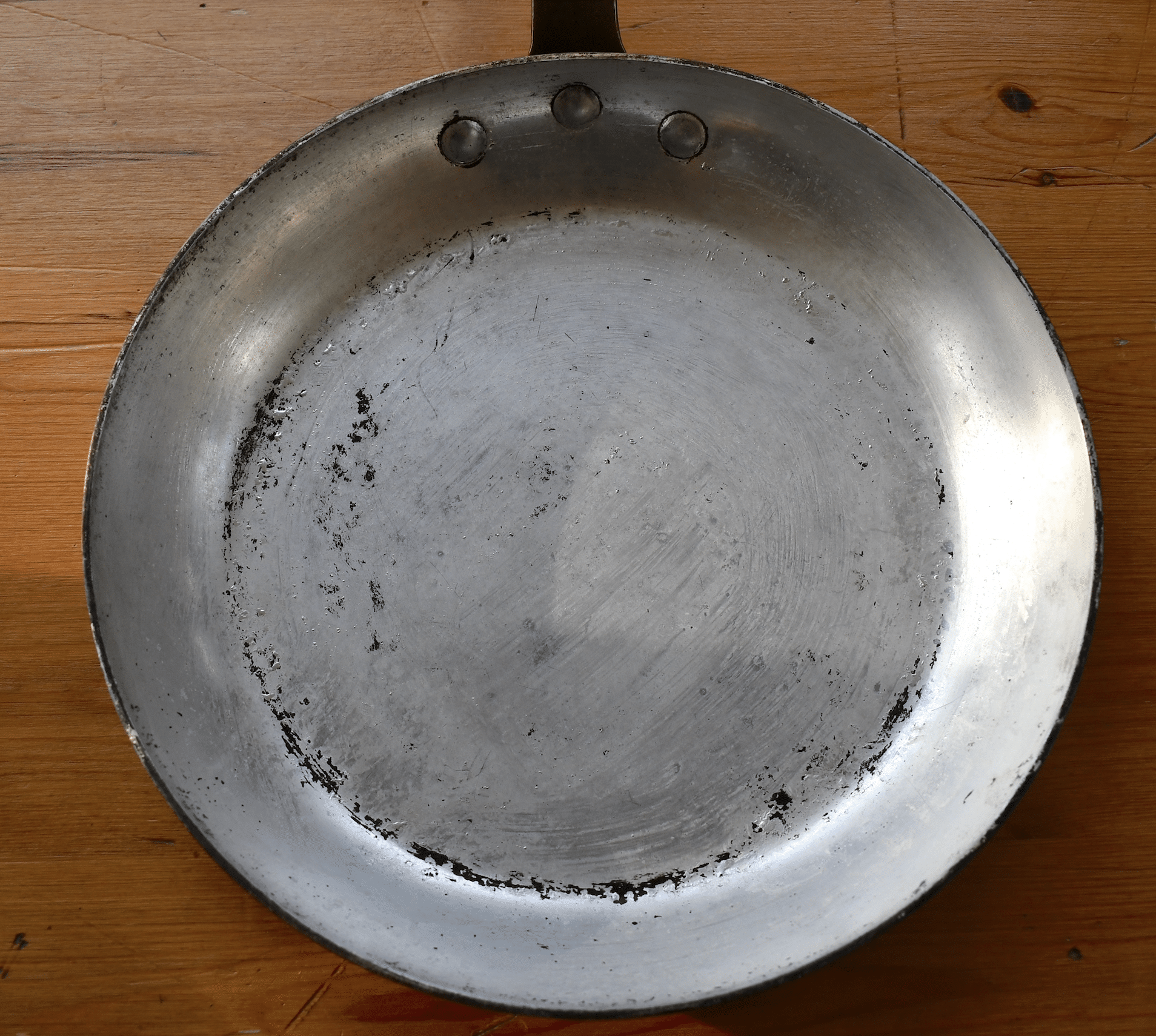
Here’s a second example — my beloved 24cm rondeau.
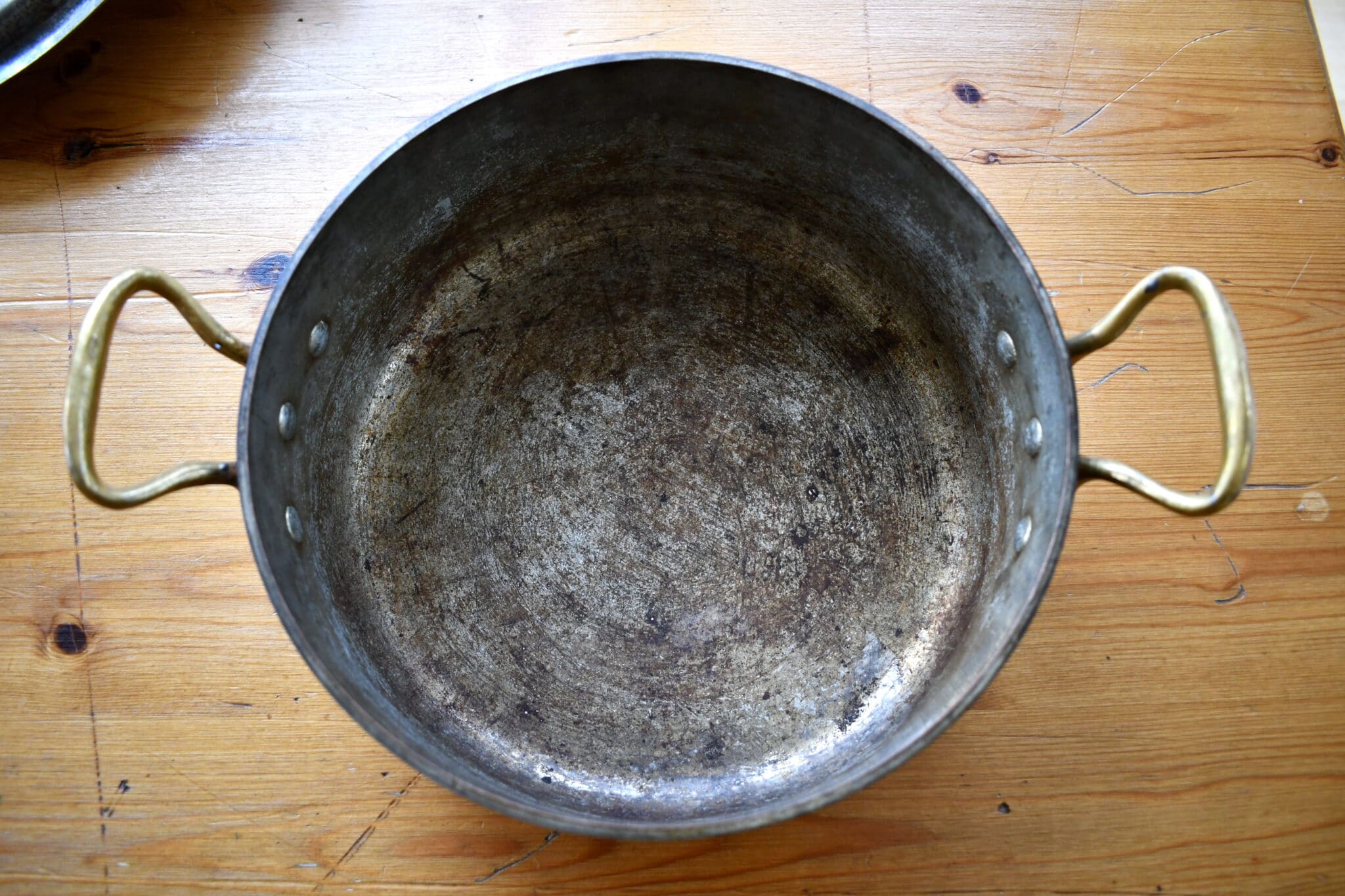
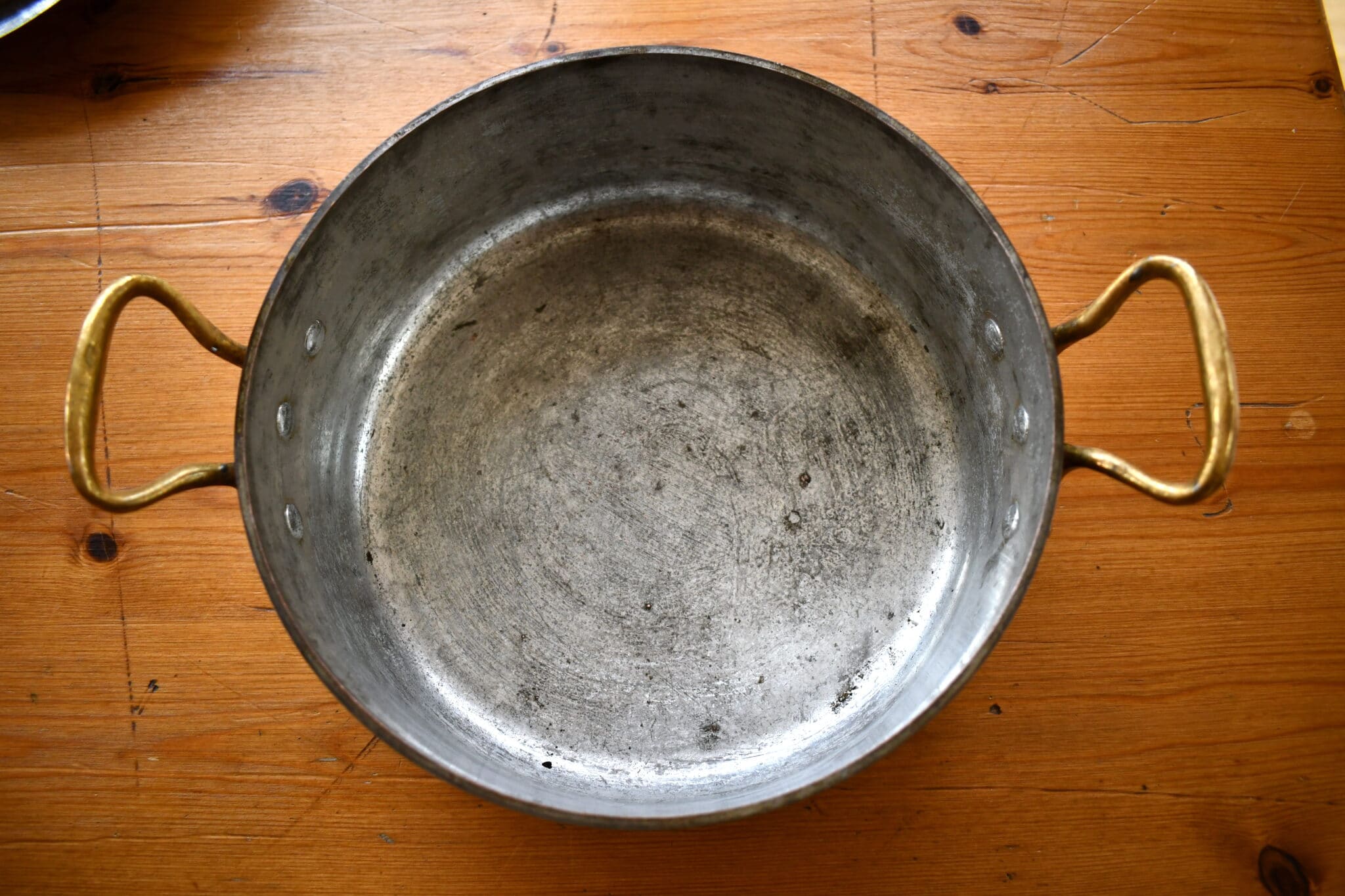
What’s happening here is that the baking soda makes the water very alkaline, which neutralizes the fatty acids in the food oils. Heat accelerates this chemical reaction and the food residue releases into the water. You’ll see the water turn brownish, with shreds of residue floating around.
Some caveats to keep in mind:
- Be careful with boiling water in an overfilled pan. You want the water level to cover all the discolored areas, right up to the rim if necessary so that the alkaline water can work on the residue. The baking soda will fizz and bubble quite a bit so be mindful of hot splashes.
- This is a messy process. The boiling water will fling hot soda particles all around your cooktop. Be prepared for some cleanup.
- It’s also smelly. The food oils will be fragrant, and it smells gross. Gird your loins.
- Be very careful moving the hot overfilled pan. Bail out of few cupfuls to drop the water level before you move it to the sink to dump it out.
- After you dump out the hot water and give the lining its final scrub-out, keep an eye on the rinse water. Brown rinse water is good — it means you’re removing the last stubborn remnants. Gray rinse water likely means you’re scrubbing into the tin itself and you should back off.
I like this technique for periodic cosmetic maintenance and I consider it only mildly invasive — the chemistry does most of the work so that the tin isn’t subjected to hard abrasive scrubbing. This is also a great first step to help you assess the lining of a pan you’ve bought. Old clean tin is usually a fairly neutral gray color; if you’ve bought an unrestored pan and the lining is brownish or greenish in tone, it may have long-neglected food residue on it that’s camouflaging the appearance of the tin. A good hot soda bath is a useful technique to reveal the tin beneath so you can assess its condition.

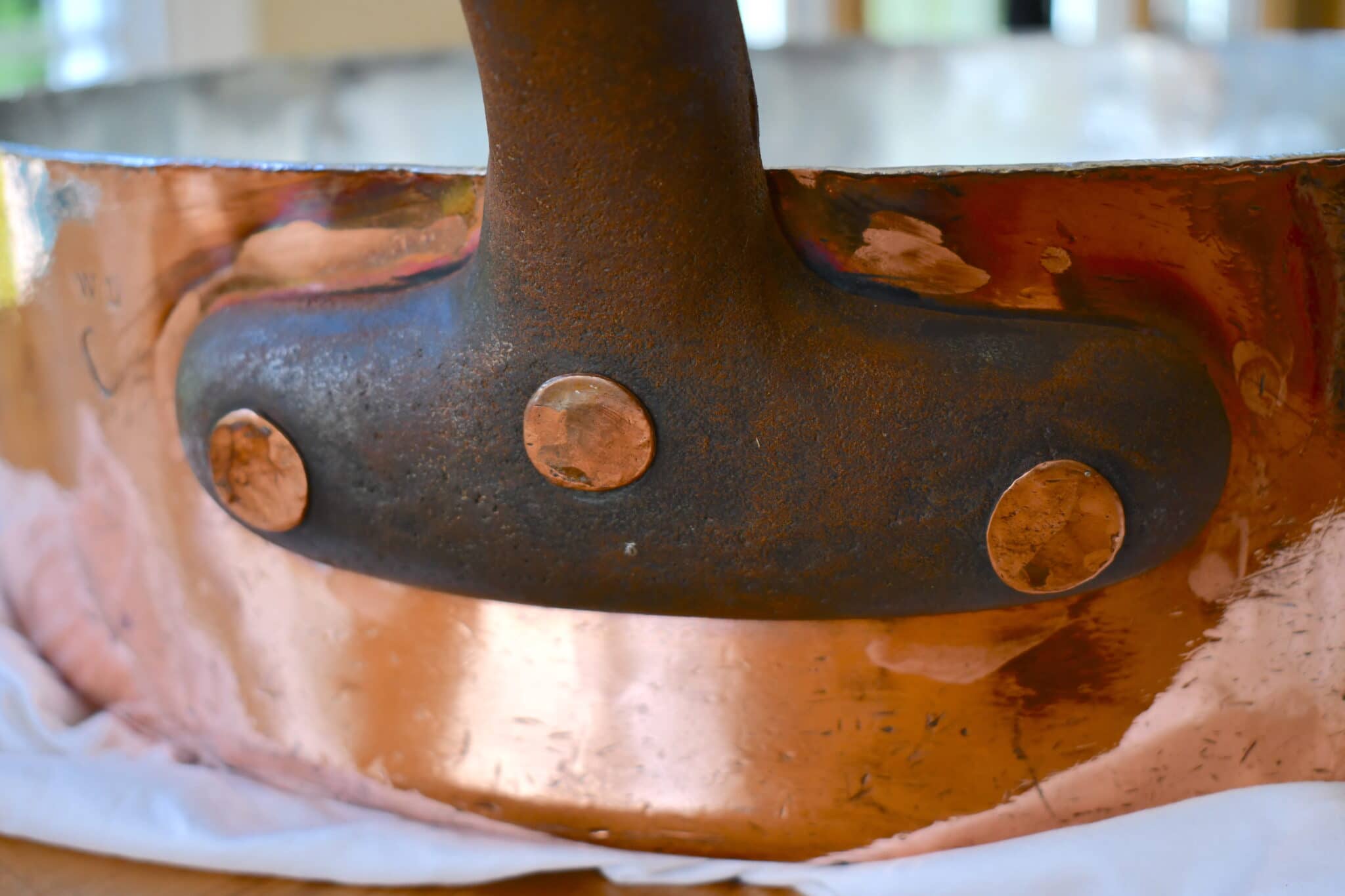
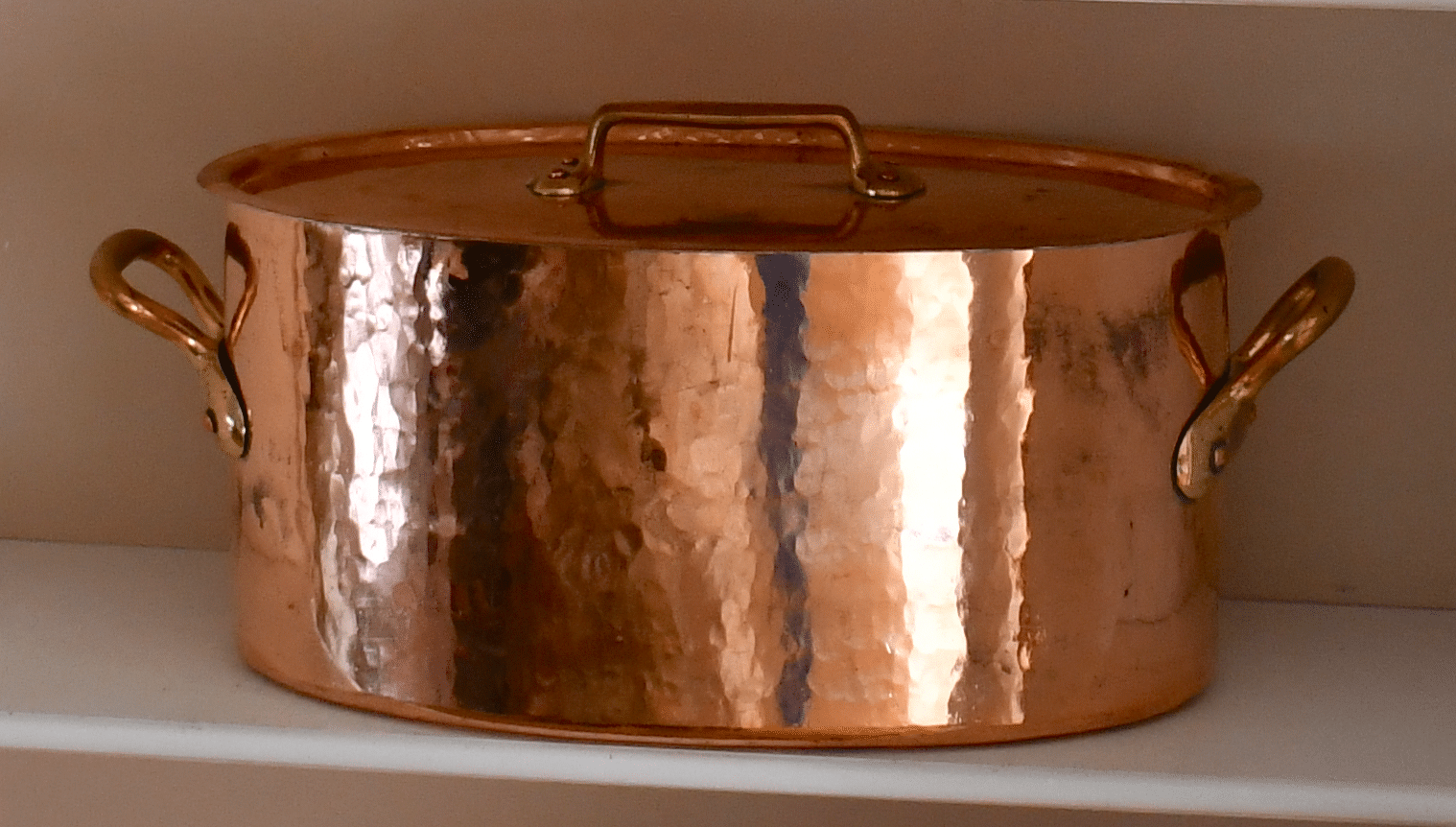

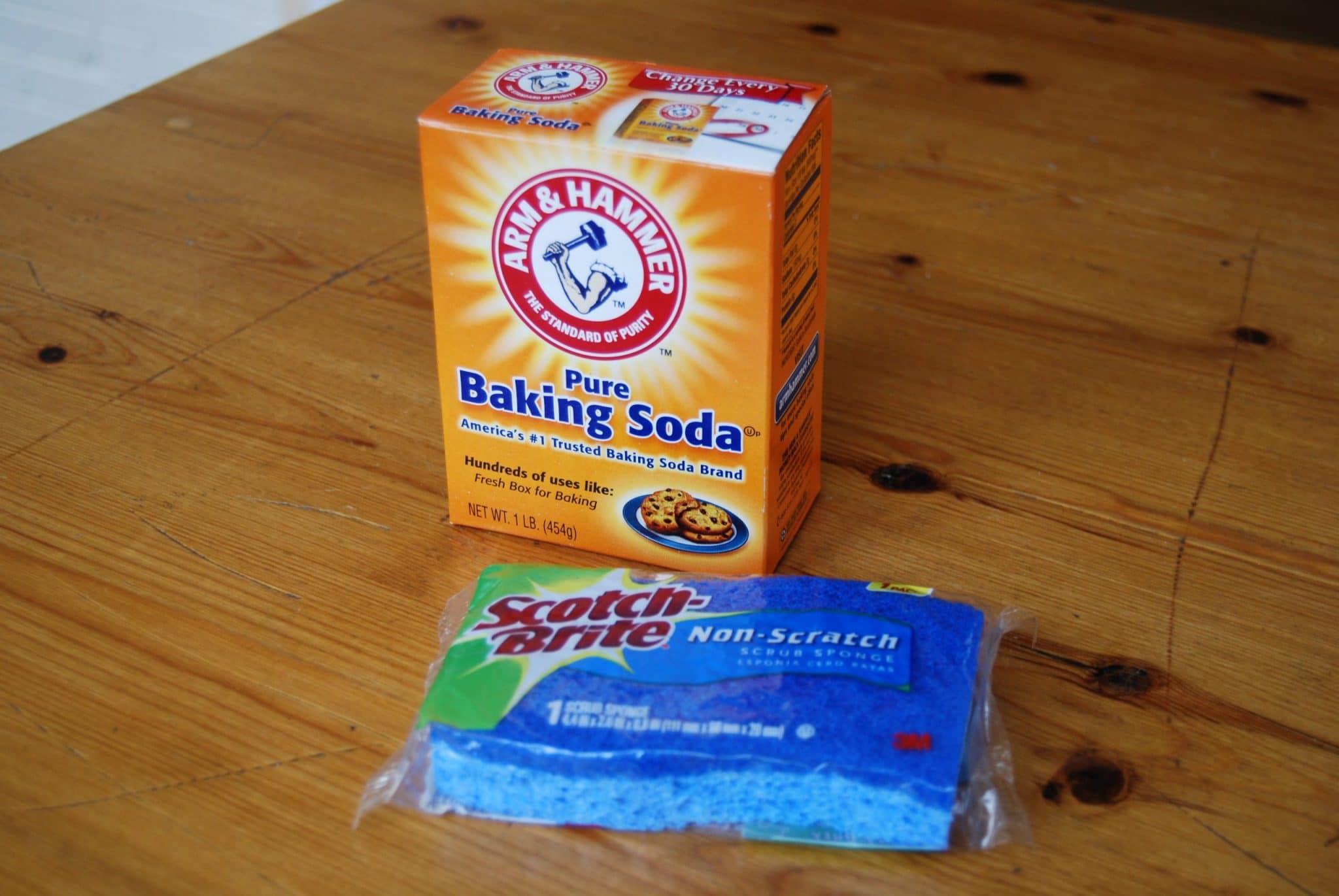

I wish I knew about the soda bath before I ruined several tin lined copper pans. I scrubbed out the stains with my scotch bright green sponges. The cost to retain them and ship them back and forth is almost as much as purchasing a new pan. Any advice?
Good to know! Would this work in silver lined too?
Lisa, I’ve used this method on my silver lined skillets and it works just fine. It’s been a while so I don’t quite remember the outcome clearly but I think it also tarnished the silver a bit, so keep that in mind.
Lisa, a solution of baking soda and a piece of aluminium foil is a way of removing tarnish from silver by electrolysis, though not recommend for really valuable items, it is great for plated flatware. Using baking soda as a degreaser on silver lined cookware should therefore be fine and the addition of foil should leave it sparkling.
Just curious… would it work to just season a tin lined copper pan the same way you season carbon steel or iron? Meaning burning in multiple layers of seed oil in the oven at 190 degress celsius?
I have used this method of seasoning on both my iron pans and stainless steel laminated copper pans (the manufacturer, Falk, recommends this). But with my tinned copper pans, I always started frying and cooking without seasoning first. In fact, my experience was that the non-stick effect got better and better over the course of use, so once a certain layer of seasoning was established. Therefore, I held back on my sauté pans to remove this layer again by cleaning more intensively with baking soda.
Recently, I ventured to try cleaning a heavily seasoned old sauté pan for the first time with a conventional metal polish and a soft sponge. Finally, the pan was cleaned with a dishwashing detergent. Visually, the result was very good and better than with soda alone. But during the first frying I had the impression that the non-stick property was worse compared to my seasoned pans.
Good cleaning advice. Do not replace NaHCO3 with NaOH. NaOH will dissolve Sn.
Use an infrared temperature gun to get confident at managing pan temperature. Everyone has that fear of melting tin. You will learn, stove top pan temperatures are in the same temperature range as oven cooking temperatures. And you will become a master of temperature and love to cook.
Copper makes this possible.
TERM CLARIFICATION necessary due to incorrect automatic translation. In the meantime I learned that the term “soda” is used differently in German than in English. I do not use baking soda NaHCO3 (sodium hydrogen carbonate), but WASCHING soda Na2CO3 (sodium carbonate) for cleaning. The latter is completely unproblematic for tin.
Martin, I will fix this with a notation in the post. I do in fact mean sodium bicarbonate — what we in the US call “baking soda.” Thanks for letting me know there is confusion in translation here!
In case anyone is not familiar with washing soda aka. caustic soda please be aware that it should be handled with care. Read the warnings on the package & take heed. It will dissolve grease very effectively and was used widely before the advent of detergents. Now mainly used as a drain cleaner. Baking soda is safe though not quite as effective as a degreaser.
Correction sodium hydroxide is caustic soda. Everything else is right.
Probably baking soda (sodium bicarbonate; in Central and Northern Europe it is often called “natron”) is more effective for our purposes than washing soda. About 2 years ago, I had also used baking soda a few times. However, because of its crystalline structure, I was worried that it would not dissolve completely and thus hurt the thin tin layer. Therefore, I have since made do with washing soda (sodium carbonate) or a common dishwashing detergent. But if experienced people can reassure me that baking soda doesn’t scrub, I’ll give it another try.
Another method: bring the baking soda in water to a boil for about 10 min. Use a double-folded square of aluminum foil (to increase the aluminum surface area in contact with the water) floating in the water while boiling. Not only will the sodium bicarbonate do its work on the surface, but loosened particles will be ionized due to the interaction and drawn electrically toward the aluminum foil and collect there as a carbon soot. It’s a little middle-school science project fun. Enjoy. William F
probably ill advised but someone please comment on why/why not use lye base cleaners such as Easyoff? It would definitely clean but is it bad for tin? Thanks
It’s very toxic smelling. Baking Soda, vinegar and lemon juice are much less offensive and clean copper and tin just as well.